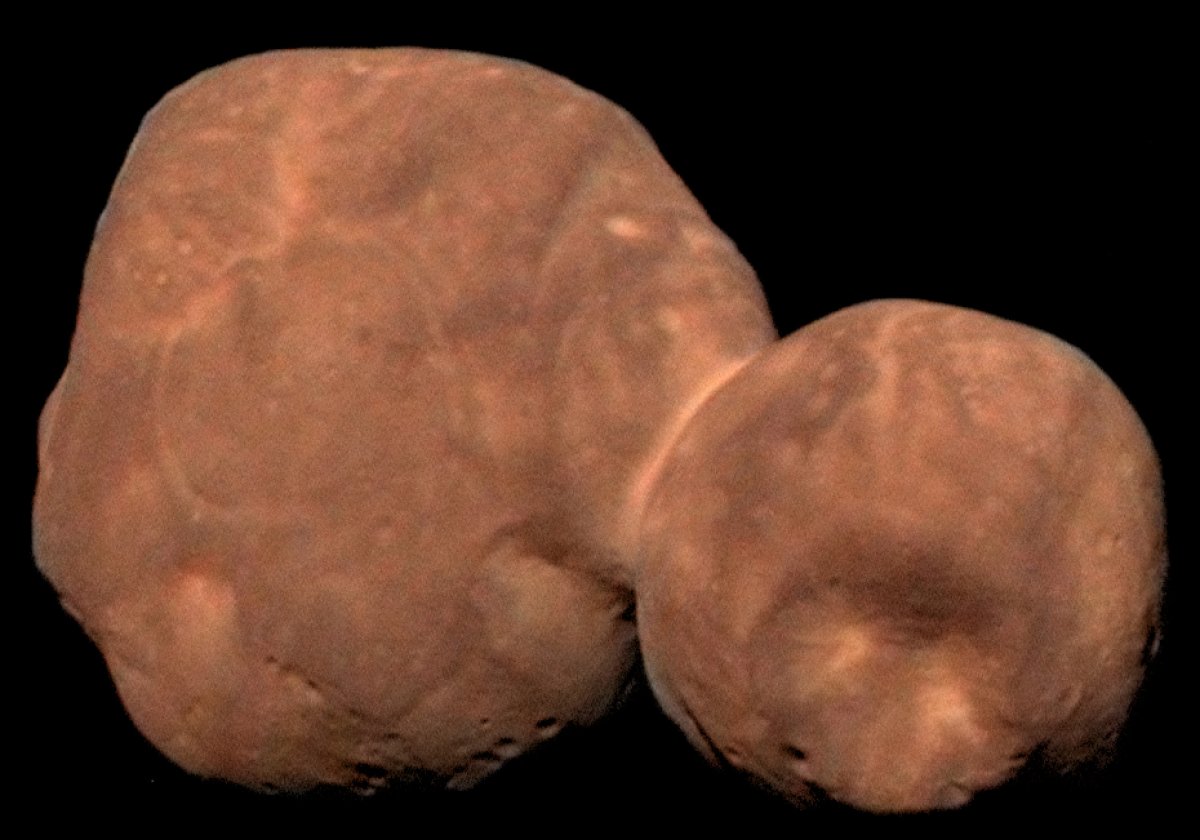On January 1, 2019, NASA's New Horizons probe flew past a distant object known as Arrokoth located around 4 billion miles away from Earth—making it the farthest and most primitive object in the solar system ever to be visited by a spacecraft. Now, researchers have revealed fascinating new insights into this mysterious world in three studies based on the analysis of data collected during the fly-by.
Among the most significant findings, scientists say the data has shed new light on the composition and origin of Arrokoth—formerly known as "Ultima Thule"—while also providing answers to a long-running scientific debate over how the building blocks of planets, known as planetesimals, were formed.
Arrokoth is a reddish, 22-mile-long object made up of two planetesimals joined together—one of which is bigger than the other, giving an appearance similar to a snowman. It is located in the Kuiper Belt—a vast disc of small bodies that circle our sun beyond the orbit of Neptune.
This belt acts as a record of the era when planets were still forming in the solar system, containing primordial material. Arrokoth, for example, has remained largely untouched—even by the sun's heat—since forming more than four billion years ago. Most of our knowledge of the Kuiper Belt comes from ground-based telescopes, meaning scientists are generally unable to study objects smaller than roughly 62 miles in diameter because they are too faint to detect.
But the New Horizons fly-by has provided scientists with an unprecedented close-up look at an object in the Kuiper Belt. The latest reports on Arrokoth are based on ten times as much data than what was available for the first published study on the object—which was released in May 2019
"The most important finding is that Arrokoth has revealed a series of important clues that provided a tentative answer to how objects like it called planetesimals—the building blocks of planets—form," Alan Stern, an author on all three studies from the Southwest Research Institute, Boulder, told Newsweek.
"This is something that has been debated literally for decades in my field. And there's been no definitive test," he said. "But Arrokoth being so well-preserved because of its distance from the sun has allowed us to to see into that window back into time that we were never able to see before."

There are two major theories about how these planetesimals form as the building blocks of planets. One is called "hierarchical accretion," while the other is known as "local cloud collapse." They both have very different predictions about what we should expect to find in the geology of objects like Arrokoth—in their shape, in their mechanical properties, and other characteristics.
According to Stern, all the evidence from Arrokoth points to the local cloud collapse model—a finding that has significant implications for the field of planetary science.
"We know now how the seeds of the planets were formed. It is through this very gentle accretion process. This is the equivalent of the 1960s when there were multiple theories competing with the Big Bang for the origin of the universe, and the cosmic microwave background revealed that the Big Bang and not the other theories were what happened," he said. "So, this is quite a watershed moment in the field of planetary science."
The research revealed that the two lobes that make up Arrokoth formed near to each other before gently assembling into the object that we can see today. The fact that the surface of Arrokoth is uniform in color and composition indicates it formed from the collapse of a small cloud of material in the solar nebula—a cloud of material from which the sun and planets are thought to have formed—supporting the aforementioned hypothesis.
Among other findings, the new data also shows how the object has a smooth surface that has only been lightly affected by impacts, and thus is well-preserved since the era of planet formation. It has also become apparent that the two lobes that make up the object are less flat than previously assumed.
Uncommon Knowledge
Newsweek is committed to challenging conventional wisdom and finding connections in the search for common ground.
Newsweek is committed to challenging conventional wisdom and finding connections in the search for common ground.
About the writer
Aristos is a Newsweek science reporter with the London, U.K., bureau. He reports on science and health topics, including; animal, ... Read more
To read how Newsweek uses AI as a newsroom tool, Click here.






